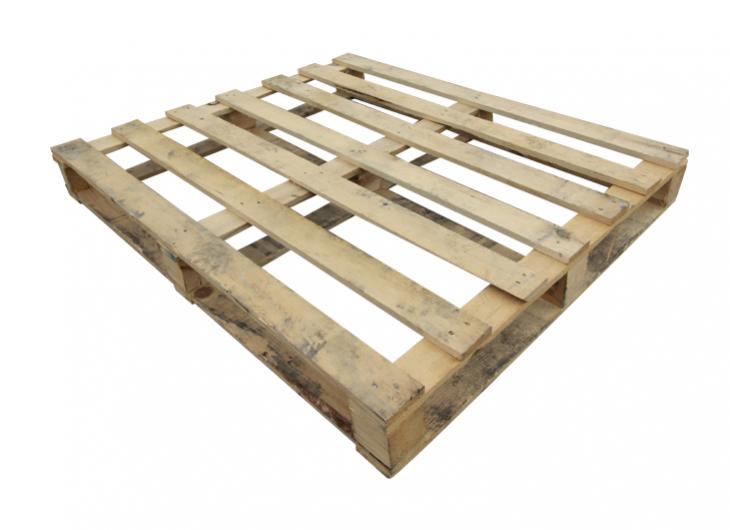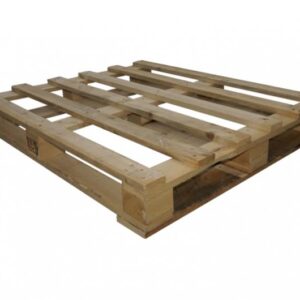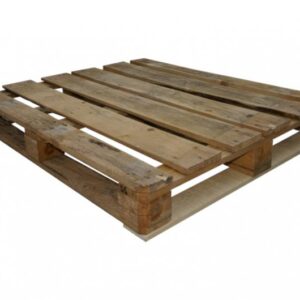Conquer Your Logistics Challenges: Unpacking the Power of the Heavyweight Four-Way Conversion Pallet (1200 x 1000 mm)
Let’s be honest, when you think about logistics and warehousing, the humble pallet might not be the most glamorous piece of equipment. But what if we told you that the right pallet, the one built for serious heft and versatile handling, could be a game-changer for your operations? Today, we’re diving deep into the world of the Heavyweight Four-Way Conversion Pallet, specifically the robust 1200 x 1000 mm model. Get ready to discover how this unsung hero can streamline your processes, boost efficiency, and save you precious time and money.
You might be thinking, “A pallet? That’s it?” But trust us, this isn’t just any pallet. This is a workhorse designed to handle your most demanding loads. Imagine a pallet that doesn’t limit your forklift operators, a pallet that can adapt to different handling needs, and a pallet that’s built to last through countless cycles. That’s the promise of the heavyweight four-way conversion pallet.
Why the 1200 x 1000 mm Footprint? The Sweet Spot for Global and Local Logistics
Before we delve into the “heavyweight” and “four-way” aspects, let’s talk about the size: 1200 x 1000 mm. This is a particularly versatile dimension that bridges the gap between common pallet standards.
- Global Reach: This size is a close cousin to the Euro pallet (1200 x 800 mm), often used in European markets. Its slight increase in width can provide more surface area for certain goods, while still being manageable for many international shipping containers and racking systems designed for Euro pallets.
- Local Adaptability: Within your own warehouse, this dimension offers ample space for a wide range of products, from individual boxes to larger, consolidated shipments. It’s a size that plays well with standard warehouse racking and conveyor systems.
This particular footprint means you’re not sacrificing precious space for the sake of compatibility. You get a generous surface area that can often accommodate more product per pallet, leading to fewer trips and greater efficiency.
The “Four-Way” Advantage: Freedom of Movement
Now, let’s unpack the “four-way” aspect. This is where this pallet truly shines and offers a significant upgrade over its two-way counterparts. A two-way pallet can only be accessed by an forklift from two opposite sides. A four-way pallet, on the other hand, can be lifted and maneuvered from all four sides.
Think about the implications for your operations:
- Increased Maneuverability: Your forklift drivers will thank you! With four-way access, they have much more flexibility in tight spaces, narrow aisles, and busy loading docks. No more frustrating jockeying for position or needing specific entry points.
- Faster Loading and Unloading: Imagine loading a truck or unloading a container. With four-way access, operators can approach the pallet from any angle, significantly reducing the time it takes to get goods in and out. This translates directly into faster turnaround times and reduced labor costs.
- Reduced Risk of Damage: When forklifts are forced to approach from limited angles, there’s a higher chance of accidental bumps and scrapes. Four-way access allows for smoother, more controlled movements, minimizing the risk of damaging your valuable products and the pallet itself.
- Adaptable to Different Equipment: Whether you’re using standard forklifts, pallet jacks, or even automated guided vehicles (AGVs), the four-way design ensures compatibility and ease of use across your warehouse fleet.
| Pallet Type | Forklift Access | Advantages | Disadvantages |
|---|---|---|---|
| Two-Way | Two Sides | Simpler construction, often lighter. | Limited maneuverability, slower loading/unloading, potential for damage. |
| Four-Way | All Four Sides | Enhanced maneuverability, faster operations, reduced risk of damage, greater flexibility. | Can be slightly more complex in design, potentially heavier depending on material. |
The “Heavyweight” Champion: Built to Endure and Perform
The “heavyweight” designation is not just a catchy slogan; it signifies a pallet constructed with robust materials and design principles to handle substantial loads. This means you can confidently stack, transport, and store your heaviest goods without worry.
What makes a pallet “heavyweight”?
- Superior Material Strength: These pallets are typically made from high-quality, dense wood or durable plastic that can withstand significant weight and stress. If you’re opting for a plastic heavyweight pallet, look for reinforced designs.
- Reinforced Construction: Expect thicker deck boards, stronger stringers (the beams that run the length of the pallet), and potentially reinforced corner blocks. These elements are crucial for distributing weight evenly and preventing deformation or breakage.
- Higher Load Capacity: This is the most direct benefit. Heavyweight pallets are rated for significantly higher static and dynamic load capacities compared to lighter-duty options.
Table: Typical Load Capacities (Illustrative – Always check manufacturer specifications!)
| Pallet Type | Material | Dynamic Load Capacity (kg) (approx.) | Static Load Capacity (kg) (approx.) |
|---|---|---|---|
| Standard Wood Pallet | Pine/Spruce | 1000 – 1500 | 3000 – 5000 |
| Heavyweight Four-Way | Hardwood/Dense Wood/Reinforced Plastic | 1500 – 2500+ | 5000 – 10000+ |
Note: These figures are for illustrative purposes only and can vary significantly based on the specific construction, material quality, and design of the pallet. Always refer to the manufacturer’s specifications for precise load ratings.
This enhanced load capacity means you can consolidate more goods onto a single pallet, reducing your overall pallet count and the associated handling and storage costs. It’s about maximizing efficiency at every stage of your supply chain.
Bringing It All Together: The 1200 x 1000 mm Heavyweight Four-Way Conversion Pallet in Action
Imagine this typical scenario:
You’re receiving a shipment of heavy industrial components. Instead of struggling with a smaller, lighter pallet that might buckle under the strain, you offload your products onto the 1200 x 1000 mm heavyweight four-way conversion pallet.
- Loading Dock Efficiency: Your forklift operator approaches the trailer from any side, effortlessly securing the pallet. The four-way access makes this a quick and seamless process, especially if space is tight.
- Warehouse Navigation: As the pallet enters your warehouse, the four-way access allows for easy maneuvering through aisles, even if other forklifts are operating nearby. No need for complex back-and-forth movements.
- Storage Optimization: The robust construction ensures the pallet can be safely stored in your racking system, even with a substantial load. You can confidently stack them if your setup allows for it, maximizing vertical space.
- Picking and Packing: When it’s time to pick items from the pallet, or when the pallet itself needs to be moved for further processing, the four-way access continues to offer flexibility and speed.
This pallet isn’t just for heavy industry. It’s equally beneficial for:
- Distribution Centers: Handling large volumes of consumer goods, electronics, or food products.
- Manufacturing Facilities: Moving raw materials, work-in-progress, and finished goods.
- Retail Logistics: Efficiently stocking shelves and managing inventory.
- Export Operations: Consolidating goods for international shipping, where pallet integrity and ease of handling are paramount.
Durability and Sustainability: A Long-Term Investment
Beyond the immediate operational benefits, investing in a heavyweight four-way conversion pallet often means investing in durability.
- Reduced Replacement Cycles: These robust pallets are built to withstand repeated use, drops, and heavy loads. This means fewer pallets needing replacement due to damage, saving you money on procurement in the long run.
- Material Choice Matters:
- Wood: High-quality hardwoods offer excellent strength and can be repaired. Many wood pallets are also sourced from sustainable forests and are recyclable at the end of their life.
- Plastic: Heavy-duty plastic pallets are incredibly durable, resistant to moisture, chemicals, and pests. They are also often made from recycled materials and are fully recyclable, offering a strong sustainability advantage.
When selecting your pallets, consider the environmental impact and the potential for a circular economy.
Frequently Asked Questions (FAQ)
We know you might have more questions, so let’s tackle some common ones:
Q1: What is the primary advantage of a “four-way” pallet? A1: The main advantage of a four-way pallet is that it can be accessed by a forklift or pallet jack from all four sides, offering significantly greater maneuverability, faster loading and unloading, and reduced risk of damage compared to two-way pallets.
Q2: How much weight can a heavyweight pallet typically hold? A2: The load capacity of a heavyweight pallet varies greatly depending on its construction and material. However, they are generally designed to handle significantly higher dynamic and static loads than standard pallets, often ranging from 1500-2500+ kg dynamically and 5000-10000+ kg statically. Always check the manufacturer’s specifications for precise ratings.
Q3: Is the 1200 x 1000 mm size compatible with standard shipping containers? A3: Yes, the 1200 x 1000 mm size is very compatible with standard shipping containers, especially 20ft and 40ft containers. While the Euro pallet (1200 x 800 mm) is often the most optimized for container loading in terms of pure quantity, the 1200 x 1000 mm size fits efficiently and provides a good balance between product footprint and container space.
Q4: Are there different materials for heavyweight four-way pallets? A4: Absolutely! You’ll find them made from robust hardwoods, dense softwood, and high-strength, reinforced plastics. Each material has its own advantages in terms of durability, weight, cost, and resistance to elements.
Q5: How can I determine if I need a heavyweight pallet? A5: You likely need a heavyweight pallet if you regularly handle heavy or dense goods, experience frequent pallet damage with lighter options, or are looking to consolidate more product onto fewer pallets to improve efficiency. Consider your product weight, handling frequency, and any warehousing constraints.
Q6: Are these pallets more expensive than standard pallets? A6: Generally, yes, heavyweight four-way conversion pallets will have a higher initial cost due to their superior materials and construction. However, their increased durability, longer lifespan, and the efficiency gains they provide often result in a lower total cost of ownership over time.
Ready to Elevate Your Logistics?
The 1200 x 1000 mm Heavyweight Four-Way Conversion Pallet is more than just a platform; it’s a strategic tool to optimize your warehouse operations. By embracing its versatility, strength, and maneuverability, you can unlock new levels of efficiency, reduce operational headaches, and invest in a solution that truly supports the demanding needs of your business.
Don’t let inadequate pallets slow you down. Explore the benefits of this heavyweight champion and see how it can transform your logistics workflow. Your team, your products, and your bottom line will thank you!



Reviews
There are no reviews yet.